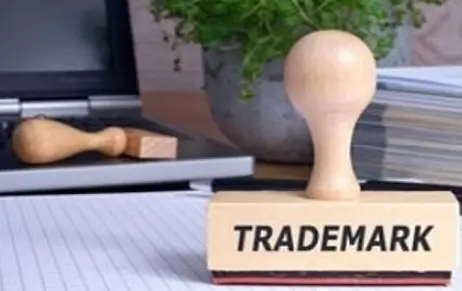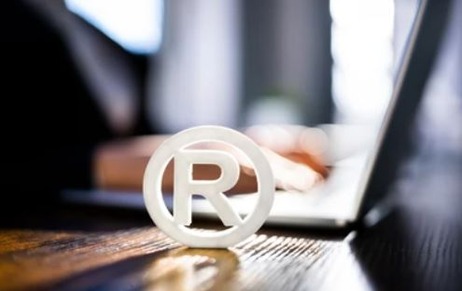TRADEMARK A trademark is something that we encounter on a regular basis. It is the…
THE ORIGIN STORY OF “SUPERHERO”
Ms. Sakshi Sharma, an intern at Khurana & Khurana looks into recent opposition matters pertaining to the Trade Mark Superhero of DC and Marvel.
trademark of Superhero Upon uttering the word Superhero, pretty obviously all you can picture are comic books or movies, the characters themselves or the two comic book giants which are constantly at loggerheads with each other, Marvel and DC. Hence, it comes as no surprise that the trademark of Superhero is registered by both of them. Yes, you read it right, both of them.
The instances of jointly registering trademarks are rare but not unknown and the words “Superhero” or “Superheroes” (and the diametric opposite i.e. Super villain) and all alternate versions involving these words are all registered as trademarks of Marvel and DC both. In fact, if usage of the trademark in this very article could amount to trademark infringement, provided that it is used for commercial purposes and unjust enrichment by means of free riding on the good will of the owner of the marks.
Through the years, Marvel or DC has pursued litigation against people for infringement of their trademark, the most recent being where a British Businessman was sued for the title of his book, “Business Zero to Superhero” and he won the suit. More about this can be read from here . But this suit has led to looking closely into the very existence of this trademark and on whether this is actually beneficial or not, both to the consumers and the owners of the mark.
Although joint ownership is not recognized in trademarks, in the year of 1979, Marvel and DC had applied for the mark and were granted so by the United States Patent and Trademark Office in the year 1981. The mark governs publications, but basically comic books and magazines. Also, cardboard stand-up figures, playing cards, paper iron-on transfers, erasers, pencil sharpeners, pencils, notebooks, stamp albums, and costumes. Since the ‘80s, they have owned the mark, and were granted renewal in 2009 last . Now, one can’t just register and renew the mark but must also take progressive steps to protect the mark from parties infringing, thus avoiding an opportunity of Trademark Office or the courts to state instances where the Comic Book houses (DC and Marvel) have failed to restrict the usage of the mark to themselves and thus use it against them.
There had been few popular instances which are noteworthy, apart from the above mentioned case of the British author’s book are, Superhero Cleaners, a house cleaning service where the employees were supposed to be dressed in the traditional tights and capes of a Superhero but Marvel and DC had sent them a notice when they attempted at registering their service under the Trademark of Superhero Cleaners, and their registration was subsequently abandoned.
Superhero Donuts, where two students aimed at selling donuts inspired not from comic books (and to avoid Marvel/DC from holding them for trademark infringement and to skip the line of usage permission) but from the heroes of the Bible. However, the term Superhero is still used by them.
Other instances include – Cup O’ Java Studio Comics being sued for their book, “A world without Superheroes” or how “Superhero Happy Hour” was changed to “Hero Happy Hour”. More cases can be read here
Now, the problem with the registration of the term “Superhero” with these two companies is that, firstly, the trademark and resultant rights arising from this are highly generic in nature. Take instances of Xerox or Frisbee, which unique terms in themselves have been so oftenly used that they are now used to denote a photocopy and a flying disc based toy and common association by the consumers is an essential to note here. Thus, in my opinion, the term Superhero, is neither an invention of a new term or any element of uniqueness, thus making the mark generic, not only by means of common usage but because of lack of the new creative element as well.
However, if the term superhero is considered to be generic then why hasn’t the Court struck it down yet. Further, drawing from the examples of Xerox and Frisbee itself, the companies still do own the trademarks, despite them becoming really common among the public. To decide on whether the mark is generic or not, what must be looked at, is the way it is used as in the registration of the mark itself, it is defined as descriptive and has been used that way by both the houses. In addition to this, there exist other superheroes that are famous and do not belong to either DC or Marvel, like Hell Boy or Spawn or Teenage Mutant Ninja Turtles and all of them are pretty famous amongst the masses as comic books or licensed movies. Therefore, though Marvel and DC comics are associated with “superheroes” the claim that the public associates the term “Superheroes” with these two houses only, in my opinion, is a feeble ground, thus rendering the claim of the mark as invalid.
Secondly, the concept of trademarks works in the way of protection of the product name and goodwill of companies by means of consumer recognition and since there are two competing houses registering for the same mark, it goes against the very nature and essence of trademarks being identification of a single source for the good. Apart from this, this registration can also be viewed as a market strategy by means of two houses monopolizing on the mark, thus eliminating competition. This registration thus, just seems unfair to small businesses, which is explained in detail in this article by Ross D. Petty where he states instances as to how Marvel and DC comics often bombard the smaller businesses with notices, thus leading to them abandoning their registration application.
The concept of joint ownership in trademark law is not new, but still is rare. There are three instances where the joint ownership of a mark is permitted. The first is in the context of a “composite mark” used by a joint venture where two unrelated entities may form a single joint venture, licensing their intellectual property, including trademarks, to that joint venture for use in the market. The second situation is “concurrent use,” whereby two parties are granted separate registrations, permitting them to use the same mark in connection with a similar product albeit in different geographic markets. The third scenario is when joint ownership is permitted and appears to extend logically from the classic Menendez doctrine: a trademark registration may be jointly owned by, and the goodwill associated with the mark apportioned among, the heirs of a unitary owner.
The joint ownership of the mark by DC/Marvel was not evolved overnight and in fact, both the competing houses had originally decided to battle for the owning the mark as well, by filing separately for the same. However, both these houses (and their smart lawyers) realized that the other would be using the mark as much as the one owning it, thus competing against one another in the courts for something as simple as the name of the book that they are publishing as well. To minimize this and the confusion at the source, joint registration of the mark was allowed and the rest they say is history.
In conclusion, whether or not this mark is actually a means of eliminating competition by limiting their usage of the term “Superhero” or is exploitative to smaller businesses or is what two owners of a registered mark do as their genuine duty for the protection of the mark is something that needs to be decided by the courts as and when disputes arise on a case to case basis but the recent case is a glimmer of hope, an exception to the usual rulings and stands true to one of the principles that “Superheroes” embody, nothing is impossible.



